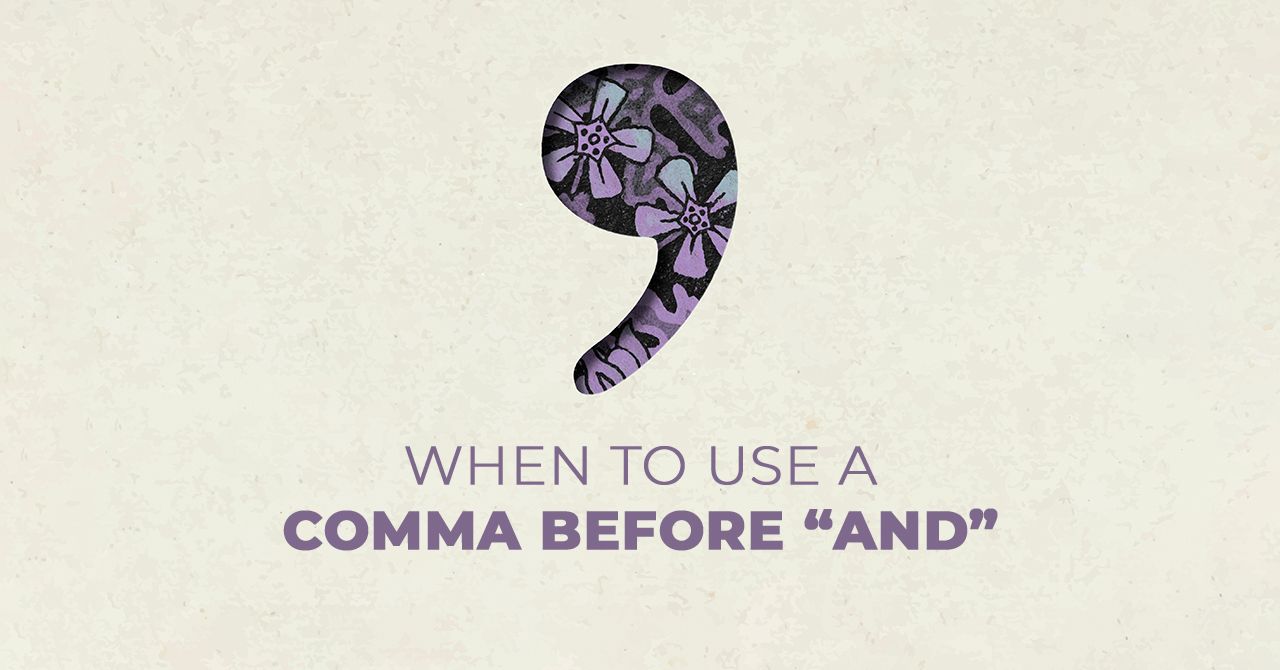
Reasons for Using Comma Before “And”
When connecting two independent phrases with “and,” use a comma before it.
A lot of questions would have probably been racing through your mind, like does the comma goes before or after “and,” when to use a comma before “and” or do you even put a comma before it? When enumerating things in a sentence, a comma is typically used. In this circumstance, the procedure is frequently finished with an “and.” This indicates that after listing the next-to-last item, the comma disappears.
A comma is commonly used to divide and link two independent phrases. It is almost never used before or after a list. In a statement, there are two main scenarios in which a comma should occur before the word “and.”
When connecting two independent phrases with “and,” use a comma before it. When “and” occurs before the last item in a list, you can also use a punctuation mark. It’s known as an Oxford comma.
Comma Before “And” When Independent Clauses are Joined
To appropriately use a comma before conjunction “and,” you must understand the difference between independent and dependent clauses. A remark that may be used as a whole sentence on its own is called an independent clause. A subject, a verb, and a full notion are all present in every independent phrase.
A statement that is not a complete sentence is referred to as a dependent clause. Even if it has a subject and a verb, the concept is still insufficient. Two separate clauses can be connected by coordinating conjunctions. “Nor,” “for,” “but,” “and,” “yet,” “or,” and “so” are the seven coordinating conjunctions. Whenever “and” joins two distinct phrases, a comma should come before “and.” Any coordinating conjunction that connects two separate clauses must follow this rule.
Example:
Dan is cute, and I love him.
I want to buy the ball with my friend on my way from school, and he wants to buy puzzles.
To unite separate sentences, a comma should only be used if coordinating conjunction like “and” is present. Combining two independent clauses with just a comma and no conjunction is incorrect.
When to Use a Comma Before “And” in a List
The comma should come before the conjunction “and” when it connects two entire phrases. But take note of the phrase “complete,” which refers to the subject, verb, and object, with or without the object, depending on whether the verb is transitive.
Examples:
They went to the store, found John at the garage, and got fuel on their way back.
She had found out, kept the information, and planned to take action after the face-off.
The two clauses or phrases joined by “and” in the instances above are unmistakably separate. Because of this, the statement may be divided into two parts and separated by full stops.
Don’ts of Comma Before “And”
Is there even a comma before “and?” Well, sometimes, it does not apply all the time. Here are some don’ts of using a comma before “and.”
For example:
He bought a biscuit and a drink.
Conclusion
Although it is not essential, the Oxford comma is grammatically appropriate. It used to be more customary not to use it, but now people prefer to use it after commas.
It’s OK to omit the Oxford comma when writing a list. However, if you’re creating commercial or technical documents, you should consult any style manuals.
Hi there! I am a Content Writer with over five years of experience creating high-quality content on different topics. And I'm an English native speaker from the USA.

